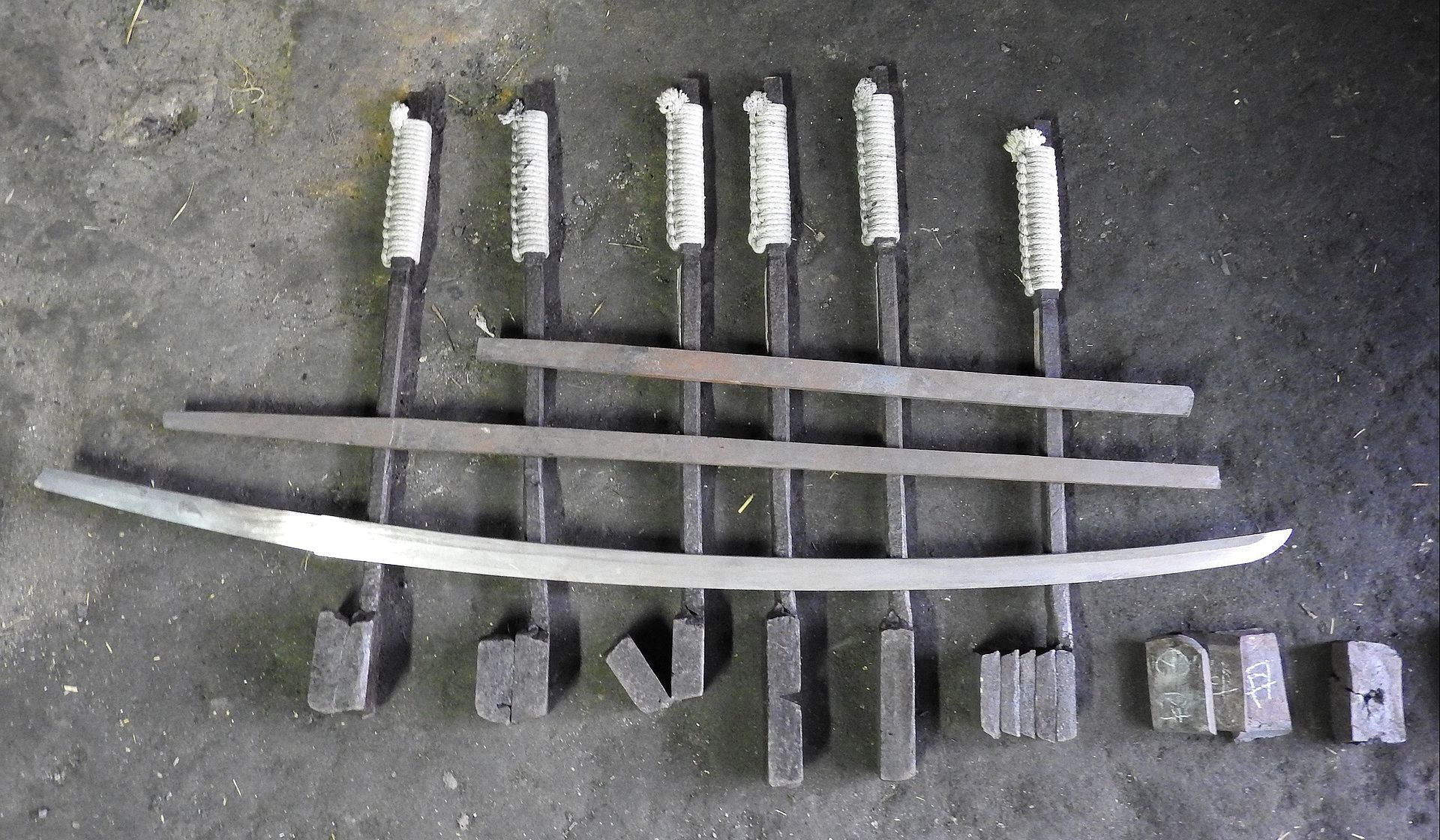Your Cart is Empty


Swordmaking is a centuries-old craft in which a swordsmith (also known as bladesmith) cast, forges or otherwise creates a long-bladed weapon using various raw materials and tools.
While movies like Conan the Barbarian (1982) make the craft appear simple and straightforward, swordmaking is a methodical and time-consuming process. Depending on its intended purpose, the sword must be carefully made so it's hard enough to retain a sharp edge. Furthermore, it must be strong enough to inflict damage when slicing and thrusting, while still maintaining enough flexibility to absorb shock without breaking.
Forging Steel Swords
The process for creating a traditional Japanese steel sword often begins with heating iron sand and coal together to create a special type of steel known as tamahagane. In Japanese, the word "tama" translates to "round and precious," while "hagane" translates to "steel." This sums up the material's characteristics, with tamahagane able to hold a sharp edge and still bend under pressure.
After creating the tamahagane, the swordsmith allows the metal to cool, chooses the best pieces for the respective sword, and forges it into a block. However, the block must be heated back to roughly 900 degrees Celsius so it can be shaped using a hammer. The swordsmith removes the block from the furnace, after which he or she hammers it down into a thinner and smaller block.
Next comes the process of scoring the block (typically with an axe) and folding it. The swordsmith scores the block at the center as a point of reference, and then he or she folds it s over. The swordsmith places the block back into the furnace and repeats the scoring and folding in a process known as shita-kitae. It's not uncommon for a traditional Japense swordsmith to perform as many as 16 folds. Any more, however, offers little-to-no benefit, as the steel essentially becomes homogeneous with too much diffusion in the carbon.
Eventually, the swordsmith will achieve the desired shape for the sword. When this occurs, the swordsmith heats the sword once more. Upon removing the sword, water is doused over the metal to harden the blade.
Polishing and Finishing
There are a few steps remaining in the traditional swordmaking process, including polishing and finishing. For instance, many swordmakers grind the blade with a special rock or abrasive to achieve a sharp edge. Some will also polish the blade to achieve a cleaner appearance. In some cases, the swordsmith will perform the polishing and finishing. In other cases, the swordsmith passes this job along to a different individual.
What About Bronze Swords?
Unlike steel and iron swords, bronze swords are created by casting bronze metal rather than forging. The swordsmith melts down the raw bronze -- made of copper and tin -- at a furnace, after which he or she pours the liquid metal into a sword-shaped mold.